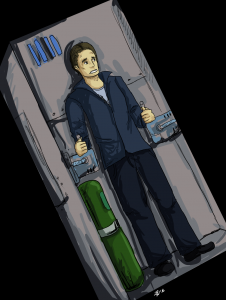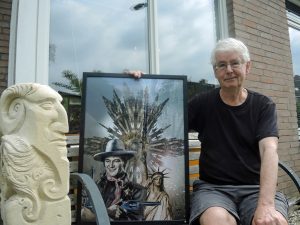 Today, we’re chatting with Tais Teng, one of our Battling in All Her Finery authors!
Today, we’re chatting with Tais Teng, one of our Battling in All Her Finery authors!
DV: Tell us a bit about yourself!
Tais Teng: Tais Teng (1952) is a Dutch sf writer, illustrator, poet and sculptor. Saddled with the quite unpronounceable name of Thijs van Ebbenhorst Tengbergen, he shortened that to Tais Teng to leave room for exploding spaceships or clever steampunk ladies on the covers of his novels. In his own language, he has written everything from radio-plays to hefty fantasy trilogies. To date, he has sold some thirty stories in the English language and one novel, The Emerald Boy. Phaedra: Alastor 824, set in the universe of Jack Vance, will be published in 2018 by Spatterlight. As a sculptor, his most heart-felt wish is a Star Wars laser cannon to carve mountains or one of the lesser Jupiter moons. He doesn’t share his home with a cat, not even with a gold fish, but a wife and three kids should count for something. Tais Teng is one of the founders of ziltpunk, optimistic climate fiction set in a decidedly Dutch future, with mile-high dykes, hurricane-herders and mangrove islands in front of the coast.
English website: http://taisteng.atspace.com/
art: http://taisteng.deviantart.
Facebook: http://www.facebook.com/
Twitter: @taisteng
YouTube: http://www.youtube.com/user/
E-books: http://www.smashwords.com/
poems: http://www.smashwords.com/
sculpture: http://www.deviantart.com/
DV: What inspired you to write “Why we are standing on the broken wall, clutching swords too rusty to take an edge” for Battling in All Her Finery?
TT: I started with the title and was very curious what would happen next. It is a system I often use: think of a scene or a title and then work forwards or backwards. Being an illustrator often gives me very clear, almost hyper-realistic mind pictures. In this case I saw the storyteller standing on the wall looking at the approaching fleet. I didn’t know until the very end who was standing next to her. The second picture was the queen walking into the village, with her bow and torn mantle. The final one was the queen and the storyteller looking over the valley with the distant cities dotting the green. Then I began typing. Often one mind-picture is enough, though.
You can read a story that uses this system at http://www.deviantart.com/
As to the heroine, I had just been writing several rather steamy and deeply romantic stories covering most of the QUILTBAG spectrum with my long time writing partner Jaap Boekestein and decided to use a protagonist who wasn’t bothered by all those irksome urges, who was in fact asexual.
DV: You definitely win the prize for the longest story title in the anthology. Do your stories frequently have long titles, or was this one different? What made you choose this title?
TT: Publishers deeply hate long titles. They want two or three word titles, and accordingly, my novels end up with rather succinct titles, just because I want them published. Personally, I love long titles: sentences that sound like prose poems and intrigue the reader. They also make my stories stand out in the index of a book. To offer some of these:
- She holds the ice and all the oceans in her fingerless hands
- What avails a psalm in the cinders of Gehenna?
- An Overview of the Infernal Regions, with some tips for recent arrivals
- Slow as glaciers and their swords all aflame.
- Soldier of the Abyss or the True Story of Captain Robert Falcon Scott
My longest book title in Dutch was: Noem mij maar Percy d’Arezzo y MacShimonoseki (Just call me Percy d’Arezzo y MacShimonoseki). This publisher happily had the same sense of humor as I and got the joke.
DV: Did you have any historical inspirations for the culture that your characters live in, or is this a strictly fantasy world?
TT: This is a fantasy world. I wanted the gritty feel of an Icelandic saga, nothing mannered in the high fantasy way with golden tressed princesses and dainty unicorns. You can read another story of this kind at http://www.smashwords.com/
I wrote quite a lot of historical fantasy in my own language: there everything has to be right and realistic, from the footwear (bare feet mostly) to the roots and grasshoppers bubbling in the cauldron. I did two historical fantasy series, one centering on Loki that went all the way from Norway to Baghdad. Another, featuring the great-granddaughter of Baba Yaga, started out in the Dutch Hansa city of Deventer and ended up on the walls of Byzantium.
DV: What’s on the horizon for you?
I am just fine tuning a novel set in the universe of Jack Vance: Phaedra: Alastor 824, which will be published by his heirs at Splatterlight Press. Another novel, Sunrise at Midnight, an alternate history novel with Hannibal sacking Rome and Archimedes kick-starting the Industrial Revolution some two thousand years earlier, is doing the rounds. You can read two English e-book collections of my stories at Smashwords, Kobo, or Amazon: Lovecraft, My Love, and Embrace the Night. I also recently started writing noir detective stories and sold several of them to Switchblade, Low Life Journal, and Black Cat Magazine.
Thanks, Tais!

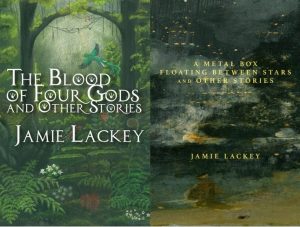 Jamie Lackey has recently published two short story collections with Air and Nothingness Press. Both A Metal Box Floating Between Stars and Other Stories and The Blood of Four Gods and Other Stories can be found at the
Jamie Lackey has recently published two short story collections with Air and Nothingness Press. Both A Metal Box Floating Between Stars and Other Stories and The Blood of Four Gods and Other Stories can be found at the 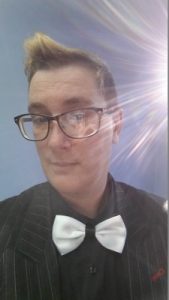 Today, we’re chatting with A. J. Fitzwater about their story in Battling in All Her Finery!
Today, we’re chatting with A. J. Fitzwater about their story in Battling in All Her Finery!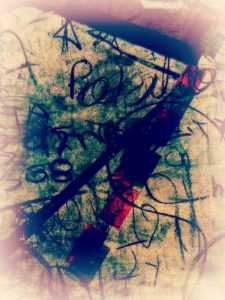

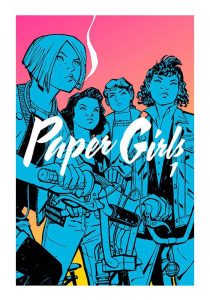
 Today, we’re talking with Blake Jessop, the author of “Cuirassiere,” one of the stories that will appear in Battling in All Her Finery.
Today, we’re talking with Blake Jessop, the author of “Cuirassiere,” one of the stories that will appear in Battling in All Her Finery.